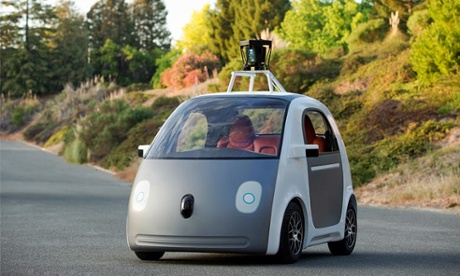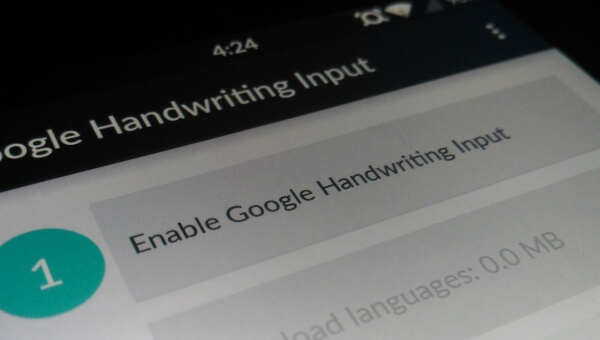For the past few years, Google has been test-driving Lexus SUVs retrofitted with self-driving technology. On Tuesday, the company announced it would test the technology in its own cars. It also gave a preview to reporters gathered for a conference in California.

The electric-powered car is simple: two seats, two buttons and a screen that displays the route. A combination of laser and radar sensors do all the work, rendering a brake pedal, steering wheel and accelerator pedal unnecessary. (Right now, the cars are monitored by Google employees when they’re out on the road.)[more…]
It looks like a golf cart wearing a silly hat. Intentionally adorable, the car is designed to encourage acceptance of self-driving technology.
The cars will rely on Google’s road maps to get around. The driver will be able to summon the car using a smartphone application, and the car will automatically drive to the destination selected on the app, the New York Times reported. The only manual controls are a stop/go button and an emergency button.
Christopher Urmson, director of Google’s self-driving project, told the Times that the cars will have a range of about 100 miles, with a motor roughly equivalent to that of a Fiat 500e.
The project’s safety director, Ron Medford, a former U.S. Department of Transportation administrator in charge of vehicle safety research and regulations, told that the car has two sets of steering and braking systems, so if one fails, the other can take over.
To reduce the risk of injuring pedestrians in case of a crash, the front of the car will be made of a foam-like material and the windshield will be made of plastic instead of glass. As an added precaution, the prototype will also top out at 25 mph.
Google safety drivers will begin test-driving the cars later this summer, ferrying employees around the company’s Mountain View campus. If all goes well, the company hopes to take the cars out on the open road. To comply with California’s new automated driving rules, additional controls will be added to the cars so one of Google’s test drivers can take over if there is a problem.
Urmson told the BBC that the controls will simply plug into the car. He expects they will be removed entirely as confidence in the technology grows. Google is expecting California to pass a follow-up regulation later this year that will allow manufacturers to apply for permits to operate fully autonomous vehicles.
A fleet of 100 of the Google-designed prototypes will be built in the Detroit area by a manufacturer the company declined to name. If all goes well, don’t expect Google to get into the car manufacturing business. Urmson told Re/code that the company doesn’t plan to sell the car itself. “We’re looking for friends and partners to make it happen,” he said.
If the cars are eventually mass-produced, they could be used as taxicabs, the Times said, citing a 2013 study from Columbia University’s Earth Institute on transforming personal mobility.
The study was led by Google consultant Lawrence D. Burns, the former vice president for research and development at General Motors. It found that Manhattan’s 13,000 taxis made 470,000 trips a day, transporting 1.4 passengers at an average speed of 10 to 11 mph, with an average wait time of five minutes.
The report suggested that a fleet of 9,000 automated vehicles hailed by smartphone could carry as many people with a wait time of less than one minute. It would be cheaper, too, an estimated 50 cents per mile compared to a current cost of $4 per mile, a calculation that assumes a 15 percent profit.
The idea of automated taxis fits with Google co-founder Sergey Brin’s vision for the project, which is “about changing the world for people who are not well-served by transportation today,” he said Tuesday at the inaugural Code Conference in Rancho Palos Verdes, Calif. “There’s not great public transportation in many public places in the United States.”
Source





